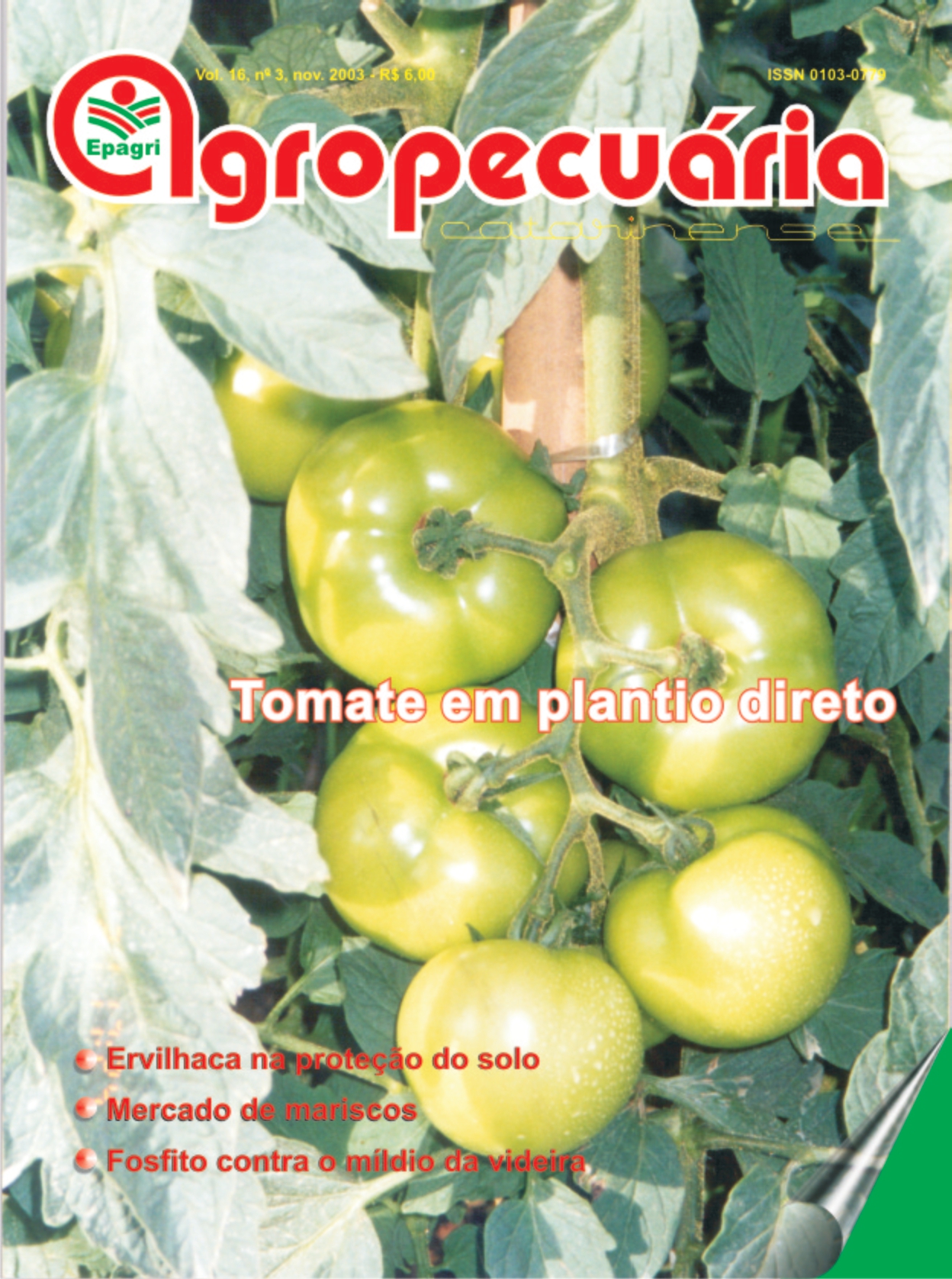Crop rotation for vegetables in southern coastland of Santa Catarina State
Keywords:
horticulture, quality, diseases, pests, soil fertilityAbstract
This paper describes a study to evaluate crop rotation systems for vegetables. The experiment was
carried out at Epagri/Urussanga Experiment Station, in Santa Catarina State, Brazil, from August 1994 to June
2000. Seven vegetable species plus oats and mucuna were arranged in systems for one, two and three years of
crop rotation. Crop rotation increased significantly the yield for crops such as sweet potato, carrot, beetroot and
cabbage, and decreased the incidence of diseases for carrot crop. Growing oats and mucuna gave more effective
weed control and reduced the need for hoeing and made easier the minimum tillage for tomato cultivation. Levels
of phosphorus in the soil had a significant increase after the third year in all of the crop rotation systems. Soil
organic matter increased, gradually, in all systems of crop rotation.
Metrics
References
Downloads
Published
How to Cite
Issue
Section
License
Copyright (c) 2003 Agropecuária Catarinense

This work is licensed under a Creative Commons Attribution 4.0 International License.




